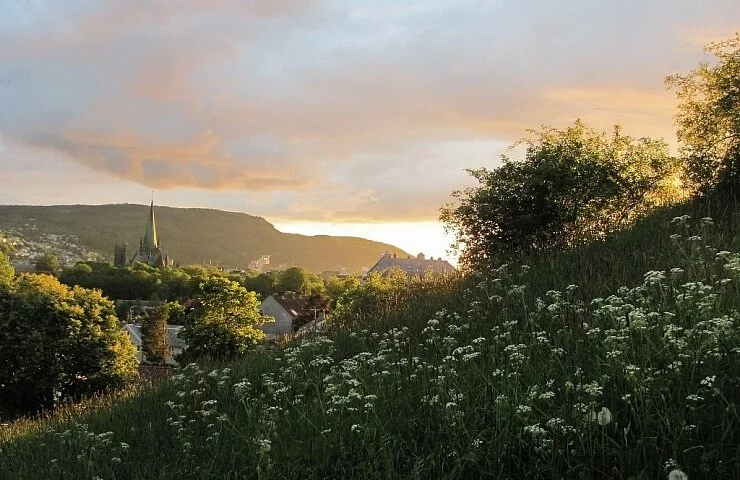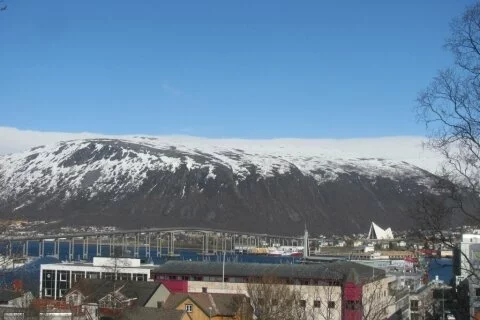It is 11 p.m. and all of Trondheim is awash with light.
Not the man-made light of electricity that powers up the streets for the safety of motorists, but a sea of honey unleashed from the sky. On what was an otherwise drab summer day with only the most cursory sprinkling of blue amongst clouds and greyness, this scene is like something from a fairytale, created effortlessly by the waving of a wand.
Standing atop Kristiansten Fortress, built in 1681 after a fire engulfed Trondheim it is easy to understand why this hilly location was chosen as a suitable place for a sentry against the ever-present fear of Swedish invasion. From here, there’s a spectacular view of Norway’s third-largest town and the coast beyond, which tonight is still as a painting – no doubt owing to the fact that much of Trondheim’s population are university students who are on holiday during the summer.
Kristiansten Fortress (Photo by Mitchell Jordan)
For Norwegians, and indeed, Scandinavians, this scene is nothing out of the ordinary. Scandinavia is, after all, a region of extremes. For much of the year, darkness overshadows the days and night while summer brings with it the promise of light that much of the world takes for granted.
Most people visiting Norway follow the predictable path of the taking the train from Oslo to Bergen – and enjoying scenery which is nothing short of jaw-dropping in its beauty; or, if money really is no object, a trip to the Lofoten Islands.
To really understand a country and its people, it’s always worth visiting some of the less tourist-orientated towns. While Trondheim has the customary double-decker red bus, the truth is that much of what’s on offer is only walking distance away and – while not as striking as Norway’s main drawcards – the city is definitely still worth a visit.
Gamle Bybro (Photo by Mitchell Jordan)
Gamle Bybro (Old Town Bridge) is a good place to start. The bright-coloured warehouses – some of which date back to the eighteenth century. Even in dull weather, they still throw back their pointed reflections into the murky river. To walk the cobbled pavements of this area is as close to a step back in time to a simpler, more peaceful world.
Of course, there is also Nidaros Cathedral, Scandinavia’s largest medieval building, to admire, an open air museum with one of the few remaining stave churches, not to mention the cute, pocket-sized Monks’ Island accessible by boat.
My tip, however, is when in Norway, live like an owl and stay up late to really see the country at its best.
No queues, no tickets, almost no tourists. The only barrier is how far your feet can carry you.



Leave a Reply